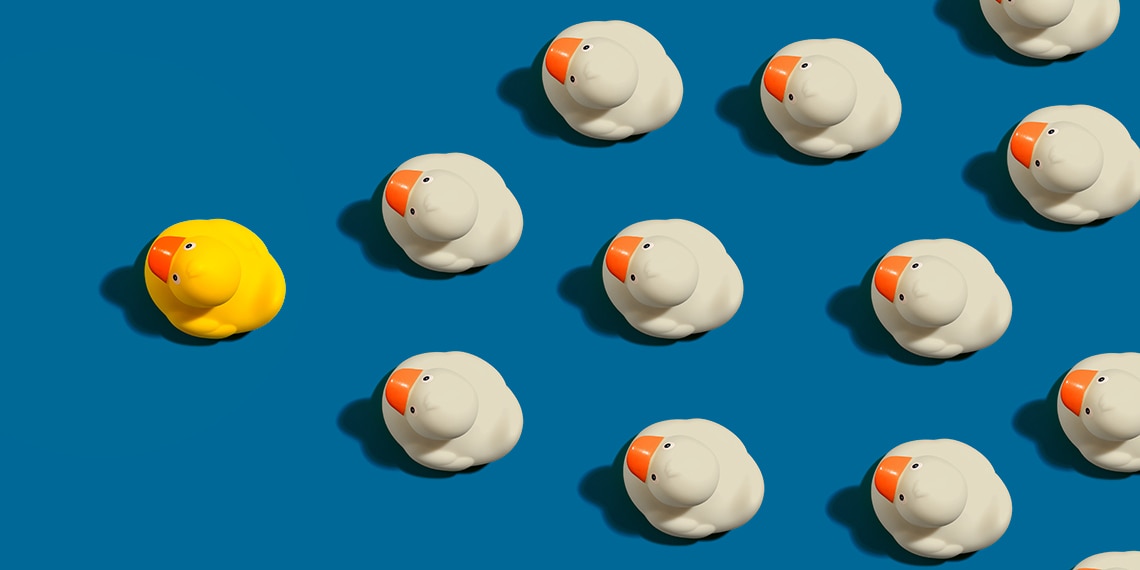
Picture the classic yellow rubber ducky: simple, iconic. Now picture that rubber ducky bearing an uncanny resemblance to Bruce Springsteen, Mr. T. or Betty Boop. That’s the gimmick behind CelebriDucks, a Kelseyville, CA, business run by Craig Wolfe. CelebriDucks remade the basic rubber duck into a collectible by transforming it into the likenesses of celebrities—from film and rock stars to athletes and historic heroes.
It’s the third business Wolfe has run over the years, and his experience has taught him several important lessons. The most essential? Failure is just a stepping-stone, not a stopping point. “I had to overcome several failures to create any kind of success,” he says. Every misfortune is nothing more than a moment rife with potential, Wolfe says. In fact, some of his best lessons came from—you guessed it—his biggest mistakes.

Craig Wolfe
Wolfe takes inspiration from the well-known saying that success is simply going from failure to failure without losing enthusiasm. “Your mindset is so important in overcoming business failures, which will always occur in some way, shape or form,” Wolfe says. “If you have a good idea, hold on to your vision and give it time. In the end, you will succeed.”
Lesson No. 1: Do Whatever It Takes
When Wolfe received a large order for a group that planned to hold a rubber duck race as a fundraiser, he was just starting production in a new factory. Making a CelebriDuck is a laborious process, since each duck is hand-painted. With a new factory and new workers, production slowed way down. He became concerned about being able to fulfill the order. “I thought I had planned well, but it looked like we might not make the deadline,” Wolfe says.
“My mistake was in not envisioning that something might go wrong,” he says. “I should have had a backup plan."
With determination, however, Wolfe found the solution to hit the deadline. With time quickly passing, Wolfe hired another painter he knew who could do the work. The painter worked day and night with the new factory, and Wolfe delivered the order the day before the rubber duck race. “Through what almost became a fiasco, I didn’t give up,” he says.
Lesson No. 2: There’s Always Something You Can Do—And a Silver Lining
Wolfe once allowed a customer who ordered hundreds of CelebriDucks to visit an overseas factory he was using. After the impromptu visit, the customer attempted to cut him out of his contract, saying that they would be working with the factory directly.
When the factory owner called and asked Wolfe to release the order, it became obvious that the factory was in cahoots with his customer. He decided not to release the order, which meant a loss of tens of thousands of dollars, but at least he had the customer’s deposit. He realized he needed to cut ties with the factory as well—but problematically, the factory held the molds for the company’s entire product line.
“I felt powerless, and I was acting like a victim until a friend reminded me that in any situation, there’s always something you can do. I knew my customer would never pay me even if I did release the shipment, and I’d rather take the loss than give in to extortion demands,” Wolfe says.
In the end, he paid for the ducks but didn’t release them. “When I paid the factory for producing the ducks, I got the molds, and I found a much better factory with more manufacturing capability.”
From experience, Wolfe is now much more familiar with how to research factories. His new factory took his business to a whole new level, he says. “Sometimes you need to cut your losses and move on.”
Pat Olsen is a freelance writer whose work has appeared in The New York Times, the Washington Post, Diversity Woman, Family Business, AARP and other outlets.
Inset photo courtesy of Craig Wolfe.

